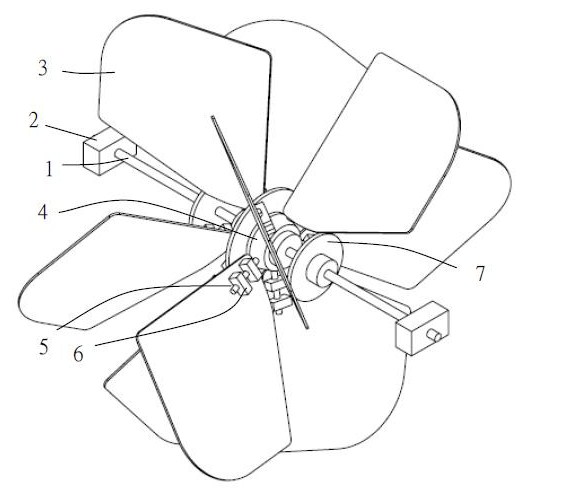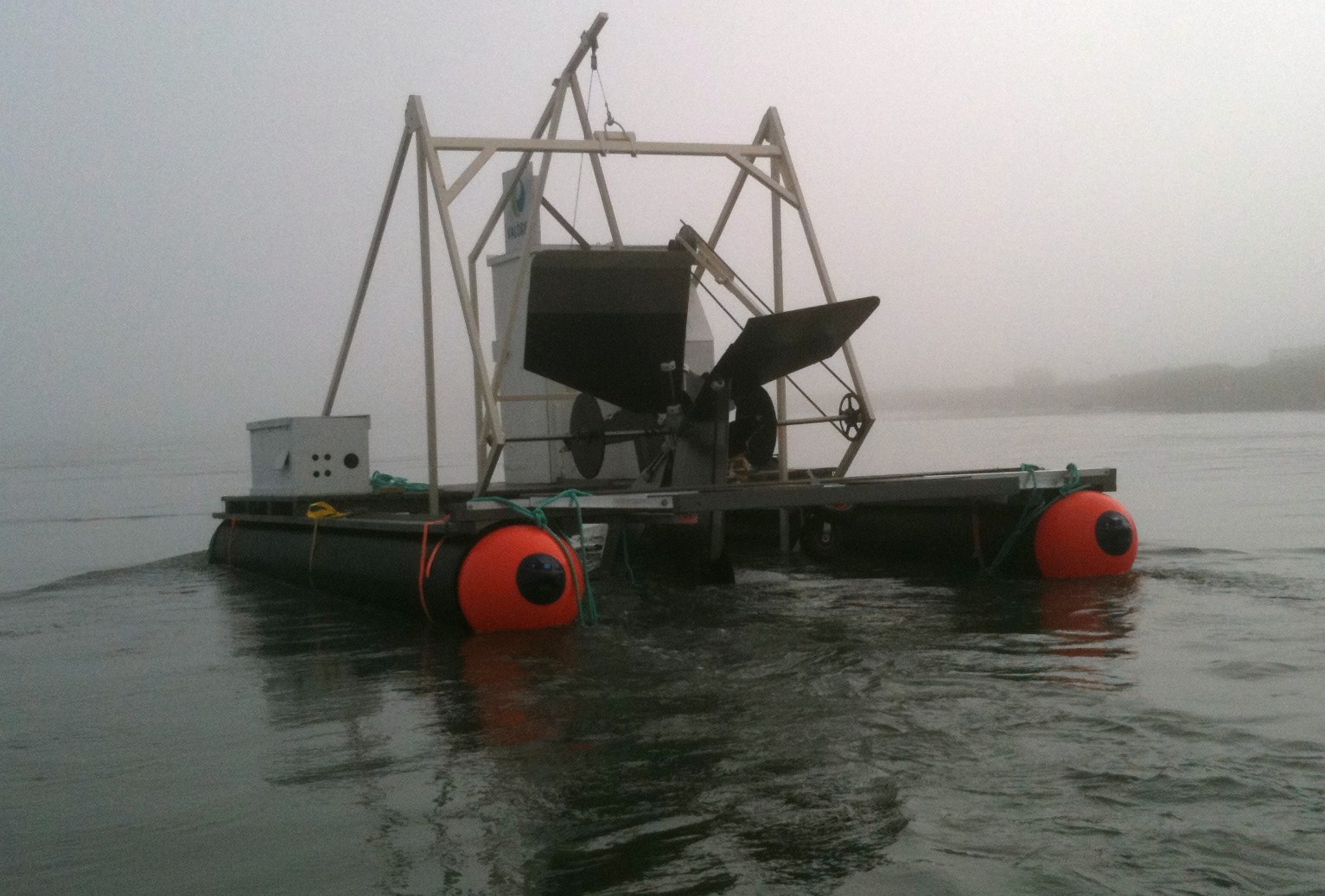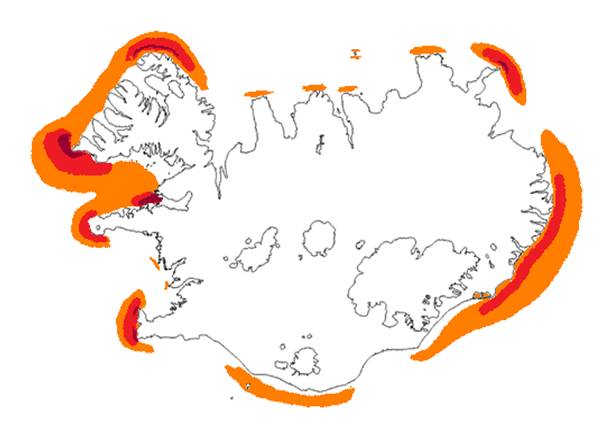Turbine development The main project is to develop a new kind of tidal turbine, for practical energy production from the slow flowing races that exist at great many places by the coast. Such races commonly have a velocity of less than 1 m/sec. The Valorka turbines are intended to be cheap in production; easy to handle and recover and to have no harmful effect on the environment. Since work began on the project, in 2009, five different types of such turbine have emerged. They differ in both approach and performance, but all of them have axis perpendicular to the current; they all can take on currents from both directions; all have variable-pitch blades and all but the first ones can be mounted more than one together on the same axis; using the same generator. The development project is carried out at Valorka´s headquarters at Ásbrú in Keflavik, Iceland. Initially, each turbine is built as a small scale model, Ø50cm, and tested in a tub which is located in the nearby villige; Grindavik. Test arrangements and their results are reviewed by experts. The next step is sea trial of bigger scale models; now beginning in Hornafjörður. These will go on, maybe for up to three years for a successful turbine type. After that, a prototype will be built and begin operation at a carefully chosen location by the coast. Prior to that, the methods for mounting, servicing and retrieving the turbine will be developed. This prototype will be test-run for several years, producing electricity. Finally the turbines are ready for mass production and marketing. How soon, is not clear at this time, since it depends on many factors not yet foreseen.
The main project is to develop a new kind of tidal turbine, for practical energy production from the slow flowing races that exist at great many places by the coast. Such races commonly have a velocity of less than 1 m/sec. The Valorka turbines are intended to be cheap in production; easy to handle and recover and to have no harmful effect on the environment. Since work began on the project, in 2009, five different types of such turbine have emerged. They differ in both approach and performance, but all of them have axis perpendicular to the current; they all can take on currents from both directions; all have variable-pitch blades and all but the first ones can be mounted more than one together on the same axis; using the same generator. The development project is carried out at Valorka´s headquarters at Ásbrú in Keflavik, Iceland. Initially, each turbine is built as a small scale model, Ø50cm, and tested in a tub which is located in the nearby villige; Grindavik. Test arrangements and their results are reviewed by experts. The next step is sea trial of bigger scale models; now beginning in Hornafjörður. These will go on, maybe for up to three years for a successful turbine type. After that, a prototype will be built and begin operation at a carefully chosen location by the coast. Prior to that, the methods for mounting, servicing and retrieving the turbine will be developed. This prototype will be test-run for several years, producing electricity. Finally the turbines are ready for mass production and marketing. How soon, is not clear at this time, since it depends on many factors not yet foreseen.
World´s first slow-current turbine to begin sea trials 
WATT; the world´s first wave-tidal hybrid
This latest part of the Valorka project aims to develop a practical technique for using wave energy to increase the output energy of the tidal turbines. One major part of this invention is the novel buoy system invented by Valdimar Össurarson many years ago, and the other is the coupling system he invented recently. By the aid of wave energy, this hybrid tidal turbine may be able to produce energy during the idle period when the tides are shifting and enhance the output power at other times. This will be the first time such hybrid technology is put to test; giving Valorka yet another lead on an extensive future market.
Ocean energy research Valorka has established a tidal energy research project; along with the Icelandic Marine Research Institute, the University of Akureyri and others. It aims at investigating the velocity of tidal currents at energy rich places by the coast and their behaviour at each place. Based on that data, an estimate can be calculated for each place and, eventually, the total tidal energy for Iceland can be estimated. Based on similar research results in neighbouring countries in the North-Atlantic, such as Ireland, Britain and Norway, indications are that the total tidal energy by Iceland may be about 330 TWh/a. This again may be compared to the fact that all of Iceland´s hydro and geothermal energy combined is about 35 TWh/a; according to the governmental energy plans. The percentage useful of tidal energy depends on the technology used.
Valorka has established a tidal energy research project; along with the Icelandic Marine Research Institute, the University of Akureyri and others. It aims at investigating the velocity of tidal currents at energy rich places by the coast and their behaviour at each place. Based on that data, an estimate can be calculated for each place and, eventually, the total tidal energy for Iceland can be estimated. Based on similar research results in neighbouring countries in the North-Atlantic, such as Ireland, Britain and Norway, indications are that the total tidal energy by Iceland may be about 330 TWh/a. This again may be compared to the fact that all of Iceland´s hydro and geothermal energy combined is about 35 TWh/a; according to the governmental energy plans. The percentage useful of tidal energy depends on the technology used.
The research project will be based on a new government policy on ocean energy that has now been put forward, following Valorka´s enterprize.
Test site for ocean-energy technology
Yet one individual project has emerged recently, as a spin-off by Valorka´s development project. This is the investigation into the feasability to establish an ocean energy testing facility in the Hornafjordur-region. This is still at early stages, but the idea seems attractive in many ways. The channels of Hornafjordur are very convenient for raft testing, such as Valorka is now preparing. The channel „Mikleyjaráll“ is an extension of the inlet channel leading to the harbour. With a depth of 12 m and currents in excess of 1 m/sec, it is totally sheltered from the ocean waves. The harbour and the village of Hornafjordur are nearby with all service needed. The area outside the estuary is very rich in ocean energy. Strong tidal currents extend over great distances and the overall wave energy is one of the greatest in the whole Atlantic. This area is therefore of much interest as a center for ocean energy. Another interesting area is the Látrabjarg-area in the Westfjord-part of Iceland, and it will, with no doubt, be the subject of more projects in the future.
A pioneer in ocean energy
Valorka is the first and ,as yet, the only Icelandic firm in ocean energy technology. This may be seen as an advantage for some parts, but at the same time it is a great challenge. Valorka needs, not only to travel the road to success; but also to build that road from scratch; paving the way for other devellopers who might come later. One obstacle after another has been overcome, bringing the project step by step closer to the final goal: To harness the endlessly renewable energy resources of the ocean in an environmentally friendly way and to provide coming generations with green energy in a sound environment.
